Epistolary Architecture: The Art and Crimes of Jane Doe
Undergraduate Option Studio at the University of California, Berkeley
collaboration with Erickson I.
Advisor: Hirschman S.
Critics: Bhatia N., DeMonchaux N., Epstein-Jones D., Kim J., Krumweide K., and Turan N.
This project leverages the architecture of the epistolary format—a story told through a collection of artifacts (traditionally letters) and uses it to construct a narrative around subjects which are literally architectural: the heists of the fictional burglar Jane Doe, whose uncanny crimes comprise a kind of spatial performance art. This project gathers diverse epistolary media through the exhibition catalogue; curation of evidence and interpretation.
This project inserts itself into the long tradition of architecture as storytelling, a role which despite its omnipresence (all architecture tells stories) is rarely underlined in architectural discourse as its own topic to be investigated and expanded upon. This collection of evidence expands architecture’s narrative field by instrumentalizing the epistolary format towards the exploration of (un)familiar architectural subjects.
A. EVIDENCE

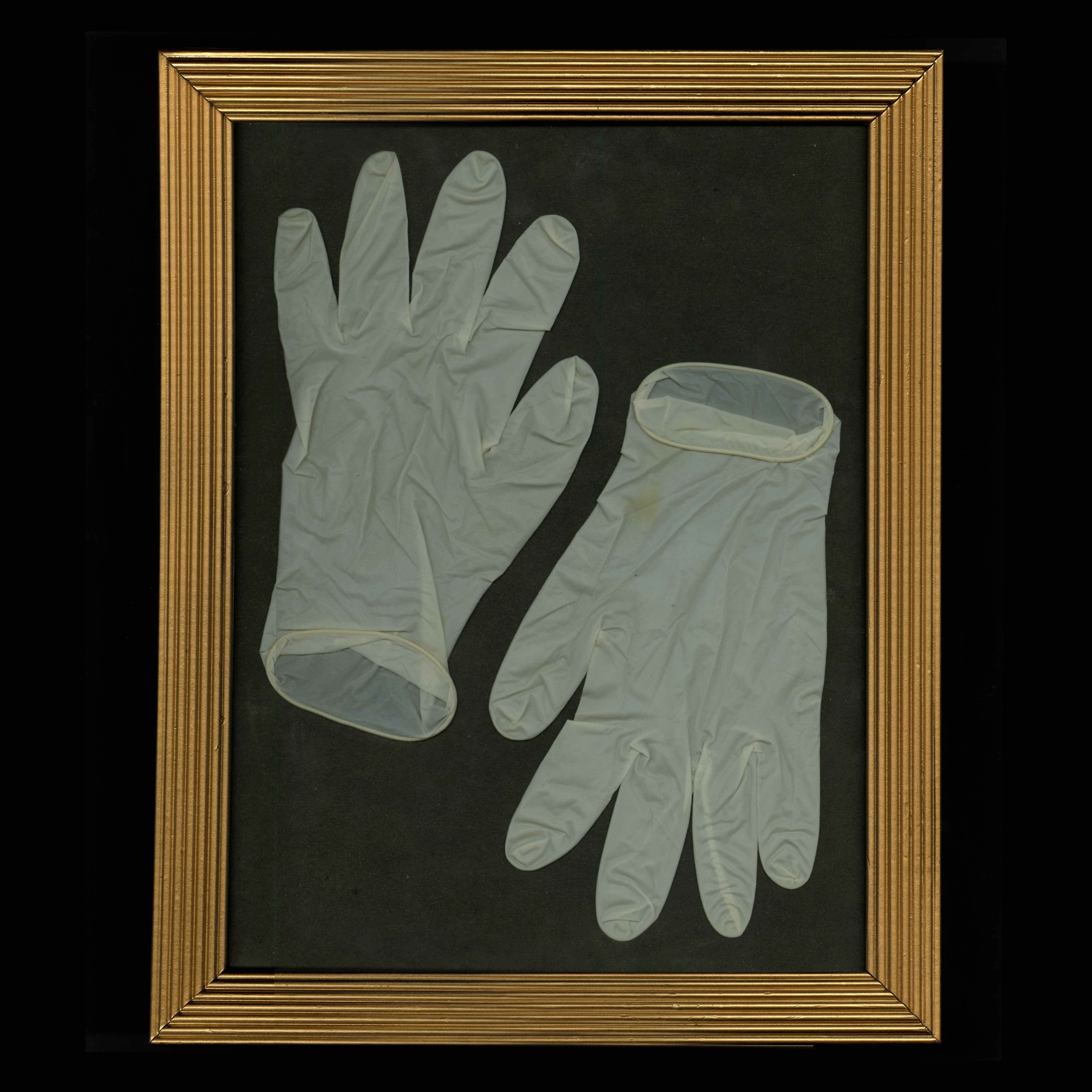



B. INTERPRETATION
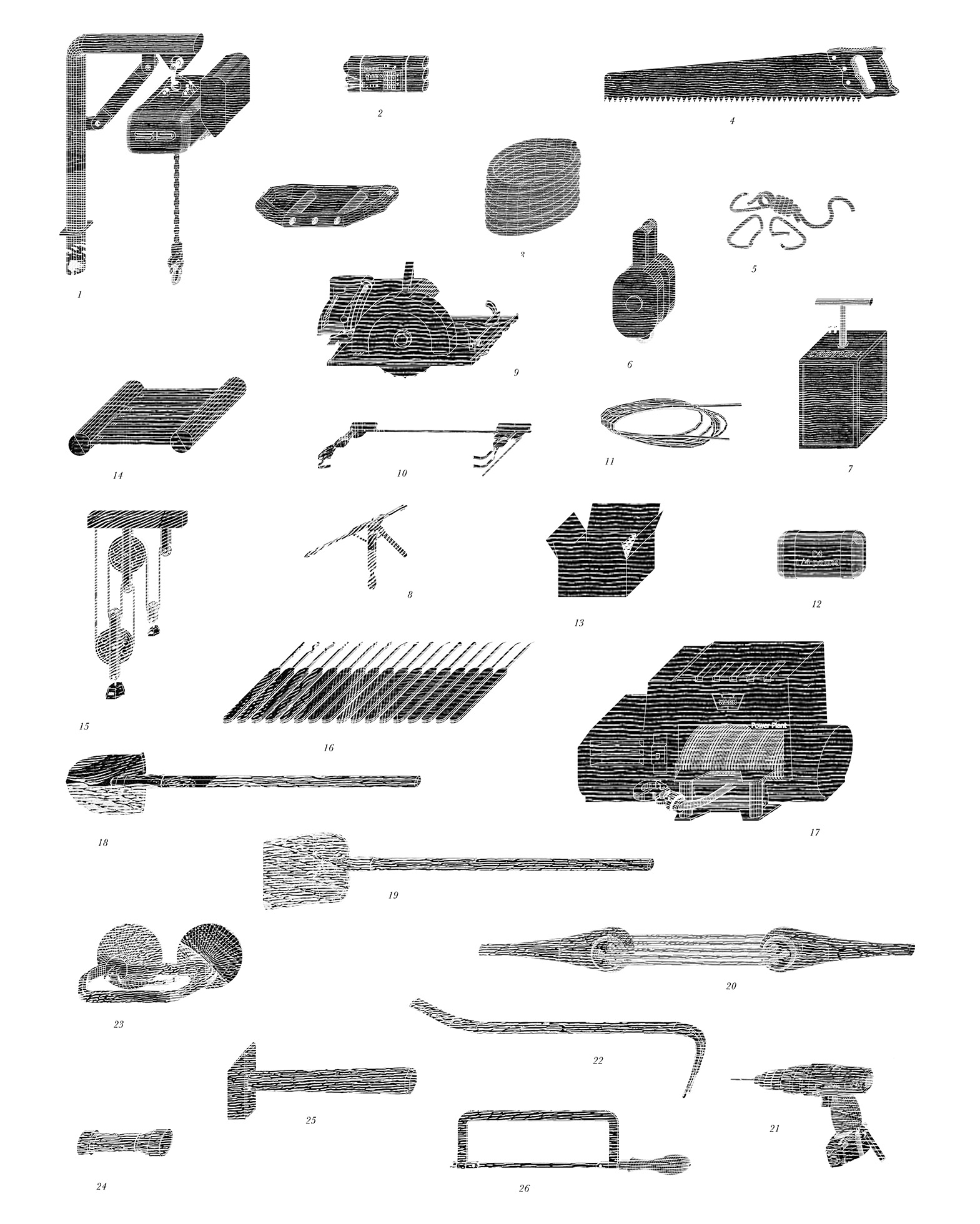
6. Possible Tools of the Burglar
This drawing speculates on the kinds of tools that might be used by Jane Doe. The taxonomy is based on the historical equipment of the burglar, what tools are commonly available, and what kinds of objects would be able to accomplish the strange acts required to support her bizarre and unprecedented crimes.
digital print on paper
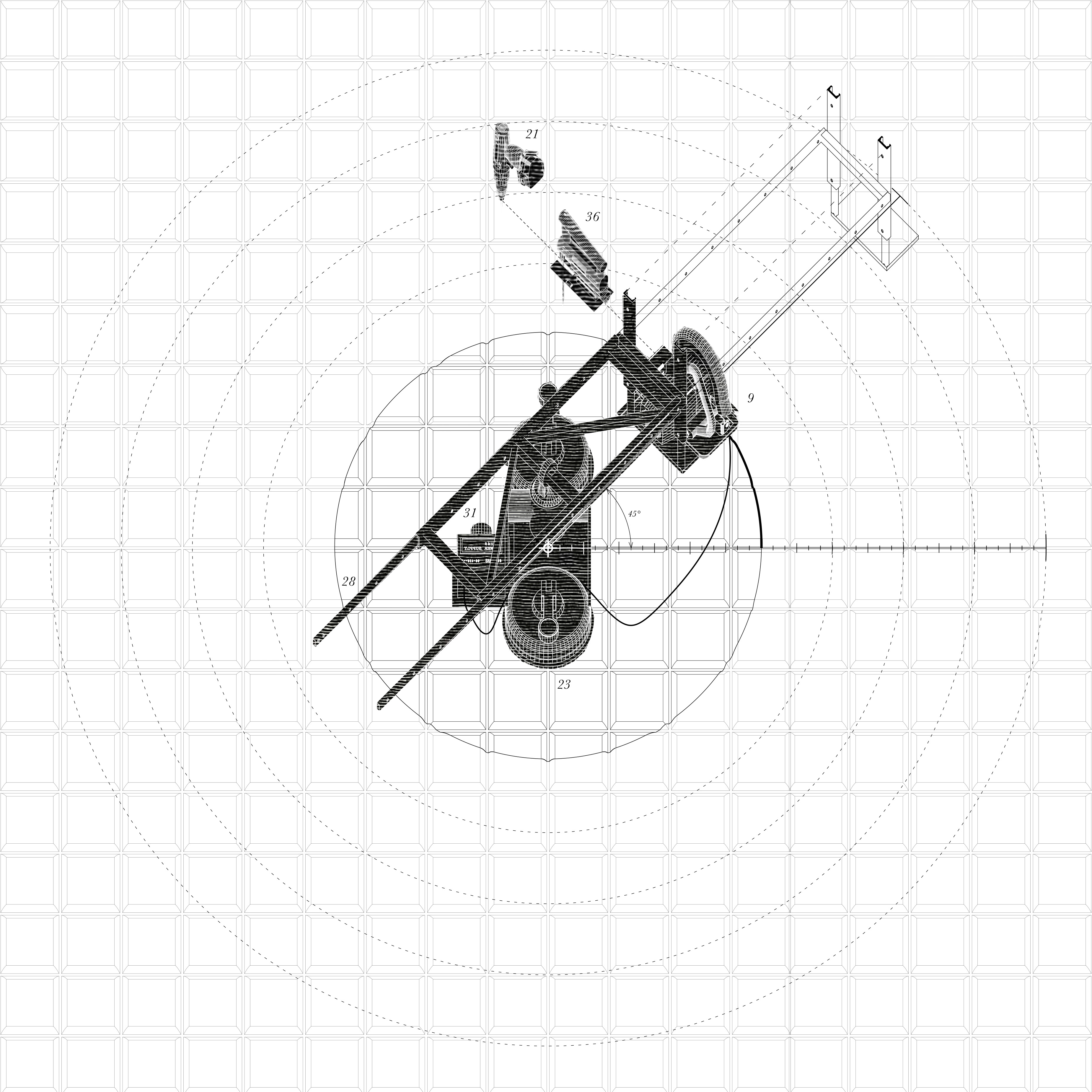
7. A Speculative Design of the Hole-Boring-Machine
This drawing takes some commonly available tools and speculates on how they might be assembled into a machine capable of making Jane Doe’s famously precise circular cuts through walls and floors. A suction mount provides a central pivot point from which an adjustable armature allows a series of power tools—which are connected to their own power supply that is also mounted on the machine—to first drill pilot holes and then make successively deeper cuts into the surfaces the rig is mounted on.
digital print on paper
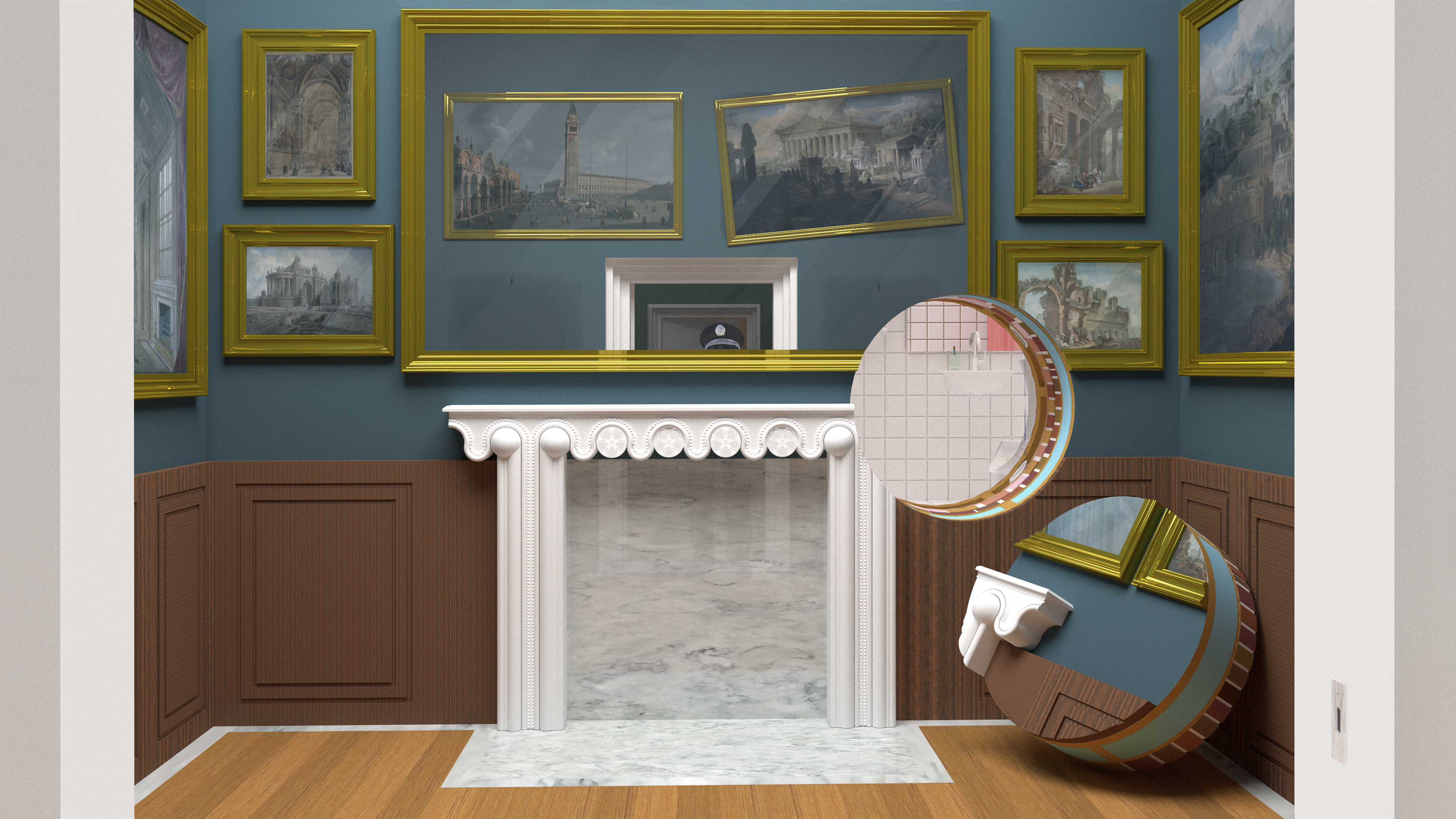
8.1 The Morning After The Sir John Soane Museum Heist (Entrance Way)
This rendering depicts the scene that awaited the morning security staff when they went on their usual rounds the night after Jane Doe’s heist of the Sir John Soane Museum: her precise circular cuts through the walls and their resulting chunks, the strange domestic scene revealed by her excavation, and the stolen paintings evidenced by the slight discoloration on the wallpaper behind where they used to hang. digital print on paper

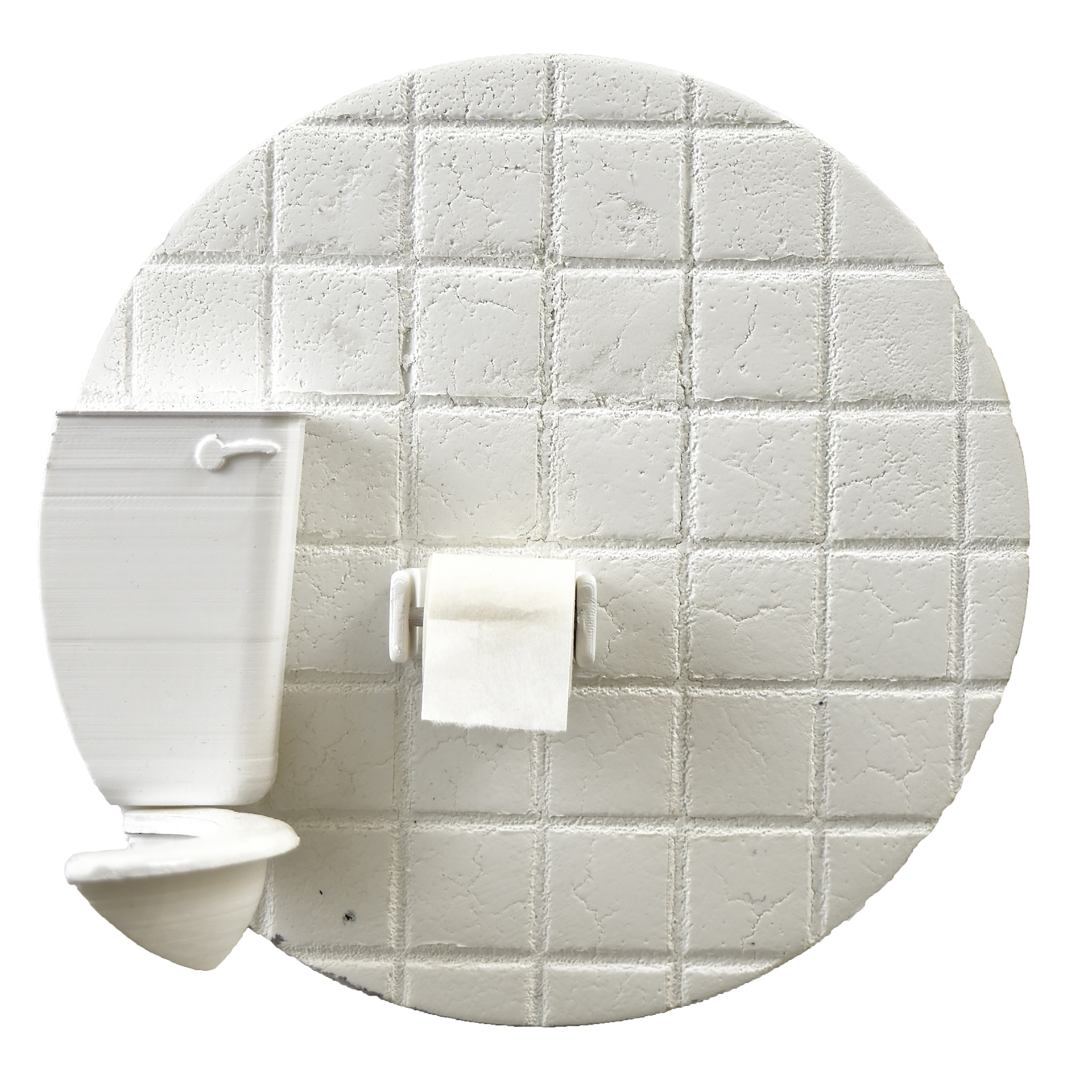
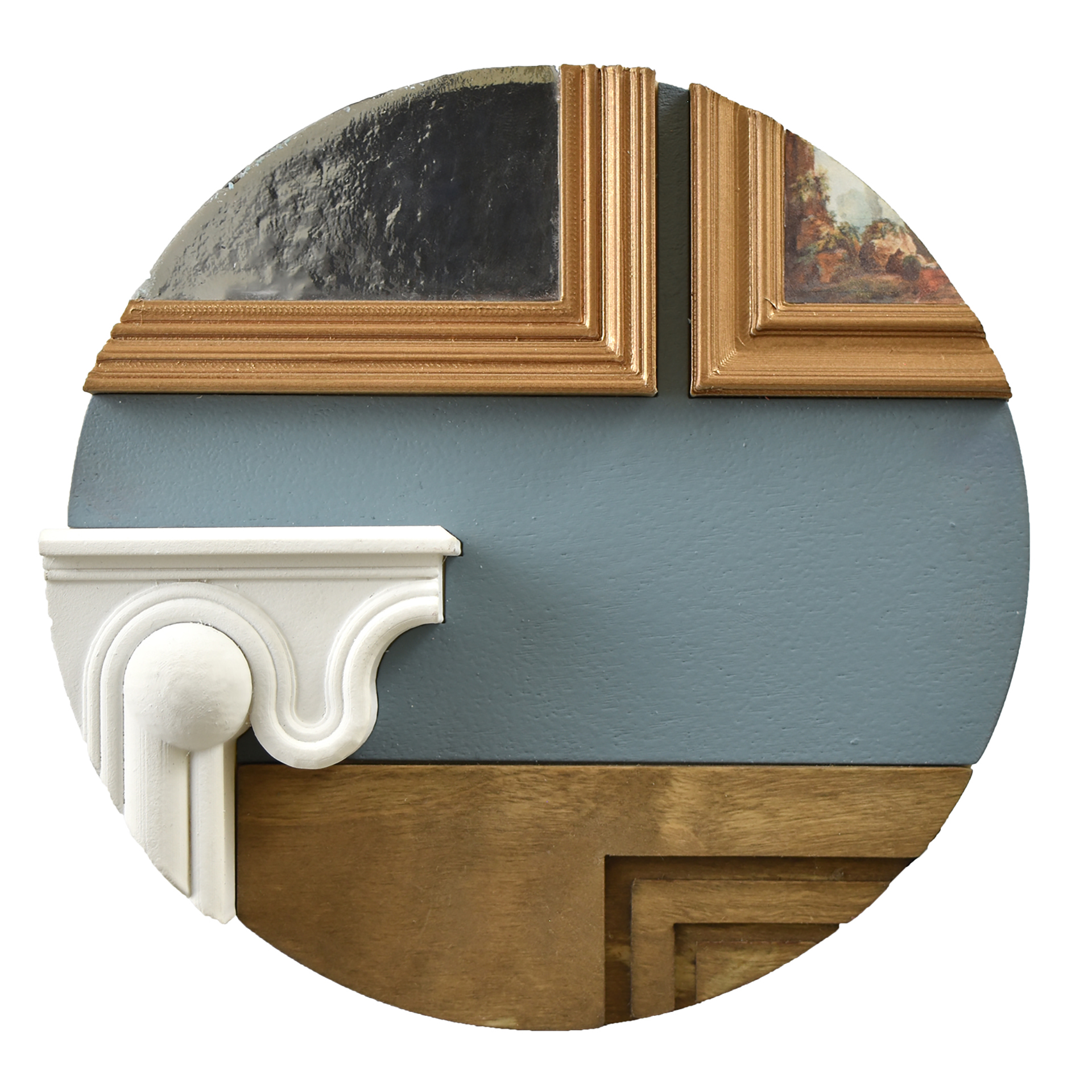
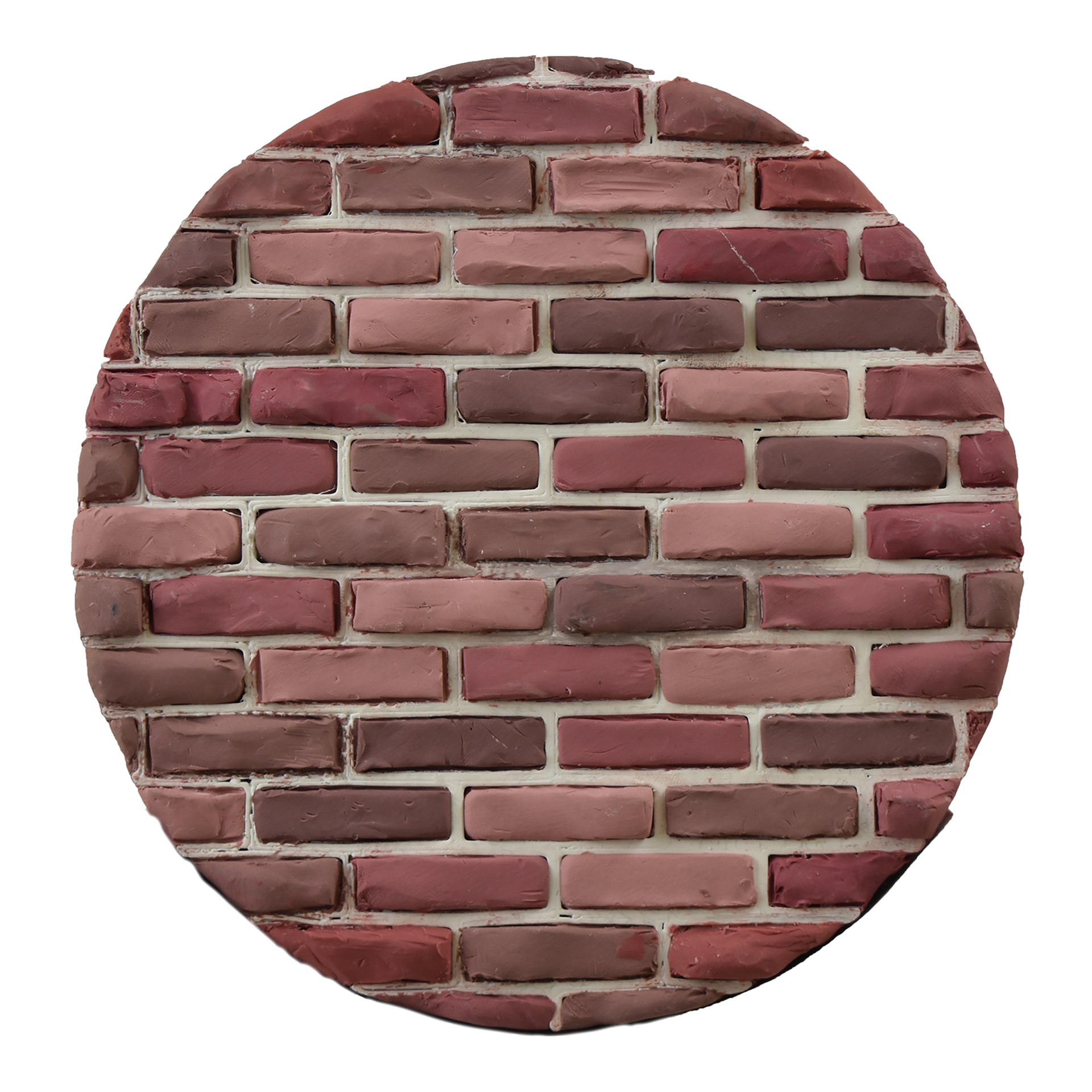
9.1.1 & 9.1.2 A Core Sample (in two parts) of the Sir John Soane Museum Heist (Entrance Cut)
This series of miniatures is a ‘core sample’ of Jane Doe’s entrance and exit of the Sir John Soane Museum during her infamous heist. She cut a perfect circle through the bathroom wall of an adjacent apartment building that she rented out on Airbnb under the her preferred pseudonym “Jane Doe”. She continued her precise cut through the exterior wall of Sir John Soane's Museum into the second floor picture room, leaving two perfect circular chunks of the walls on each side of the excavation—all done with a virtuosity that many have claimed surpasses that of late Gordon Matta Clark.
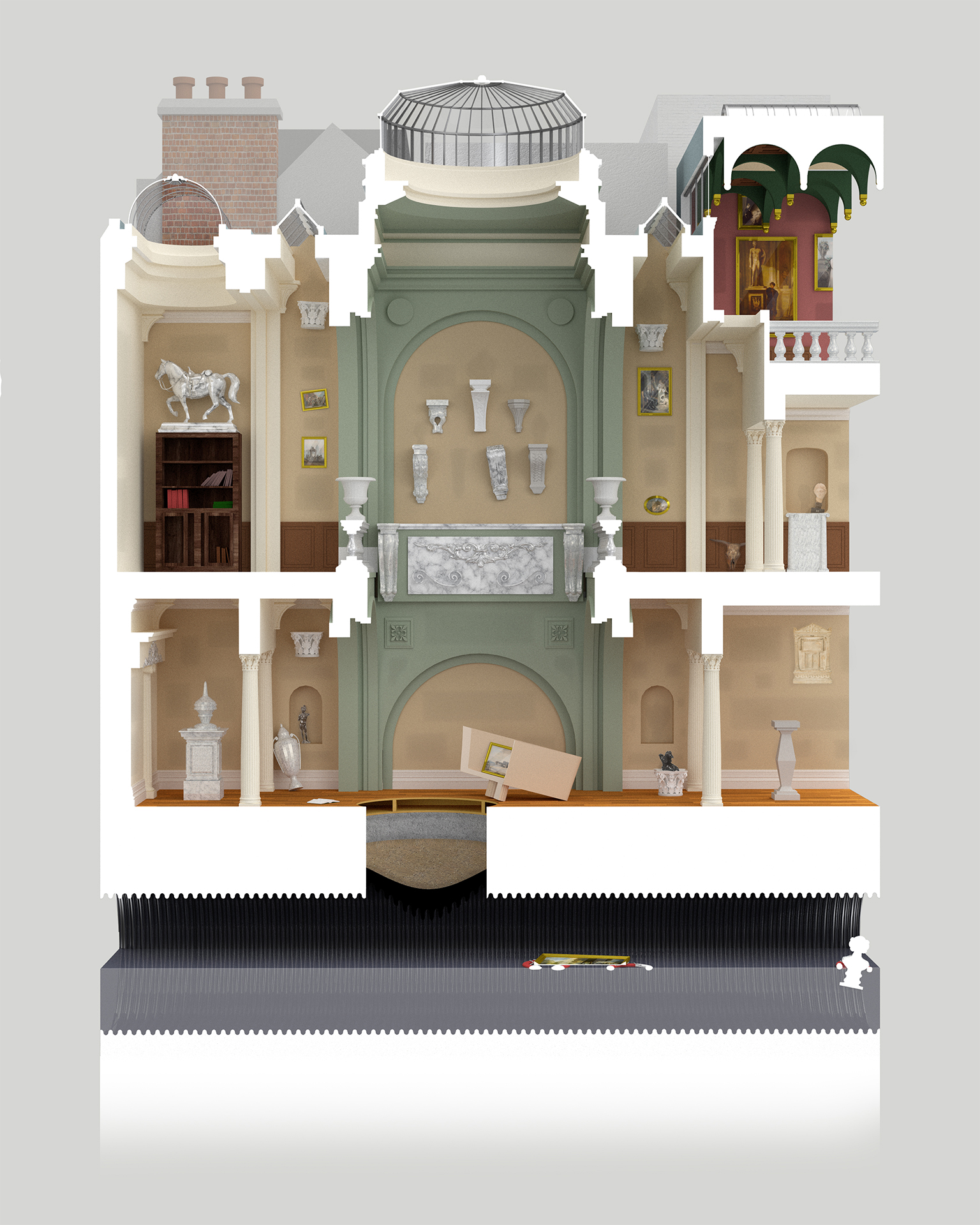
8.2 The Sir John Soane Museum Heist (Exit Way)
This sectional rendering depicts the scene around Jane Doe’s exit cut through the floor of the Sir John Soane museum into the large city drain below. The typically highly ordered objects of the museum are in a state of disarray: missing, floating away, and leaning off-center as a result of to Jane Doe’s energetic yet precise transgressions. digital print on paper


9.2 A Core Sample of the Sir John Soane Museum Heist (Exit Cut)
Jane Doe exited the Sir John Soane Museum through the floor at the street level, cutting through the ground and escaping into the large city drain below. She used the networked flows of the cities water drainage system as the getaway driver for both her and the objects she stole, floating everything to her exit.
This model changes scales across the different cuts (2”=1’ for the two 3’ 6” diameter entrance cuts, and 1”=1’ for the 7’ diameter exit cut) in order to maintain the same physical size of the miniatures.
models / plywood, clay, acrylic paint, foam, plastic


10.1 Peephole Diorama I. Her View Through an HVAC Grate in a Natural History Museum
This peephole diorama allows you to put yourself in the shoes of Jane Doe, and begin to understand her motivation to experience these transgressive spatial acts. The artifact presents her perspective looking down on on a Triceratops Skeleton and a Security Guard with a Flashlight in a Natural History Museum through an HVAC grate in the process of a heist.
10.2 Peephole Diorama II. Her Last View Before Exiting the Sir John Soane’s Museum
This peephole diorama allows you to experience the curious perspective of looking up from the drain through the cut in the floor of the Sir John Soane Museum into the upper floors of the building, just as Jane Doe must have done at the end of her heist.
peephole diorama / peephole, 1/16” plywood, acrylic paint, paper, plastic
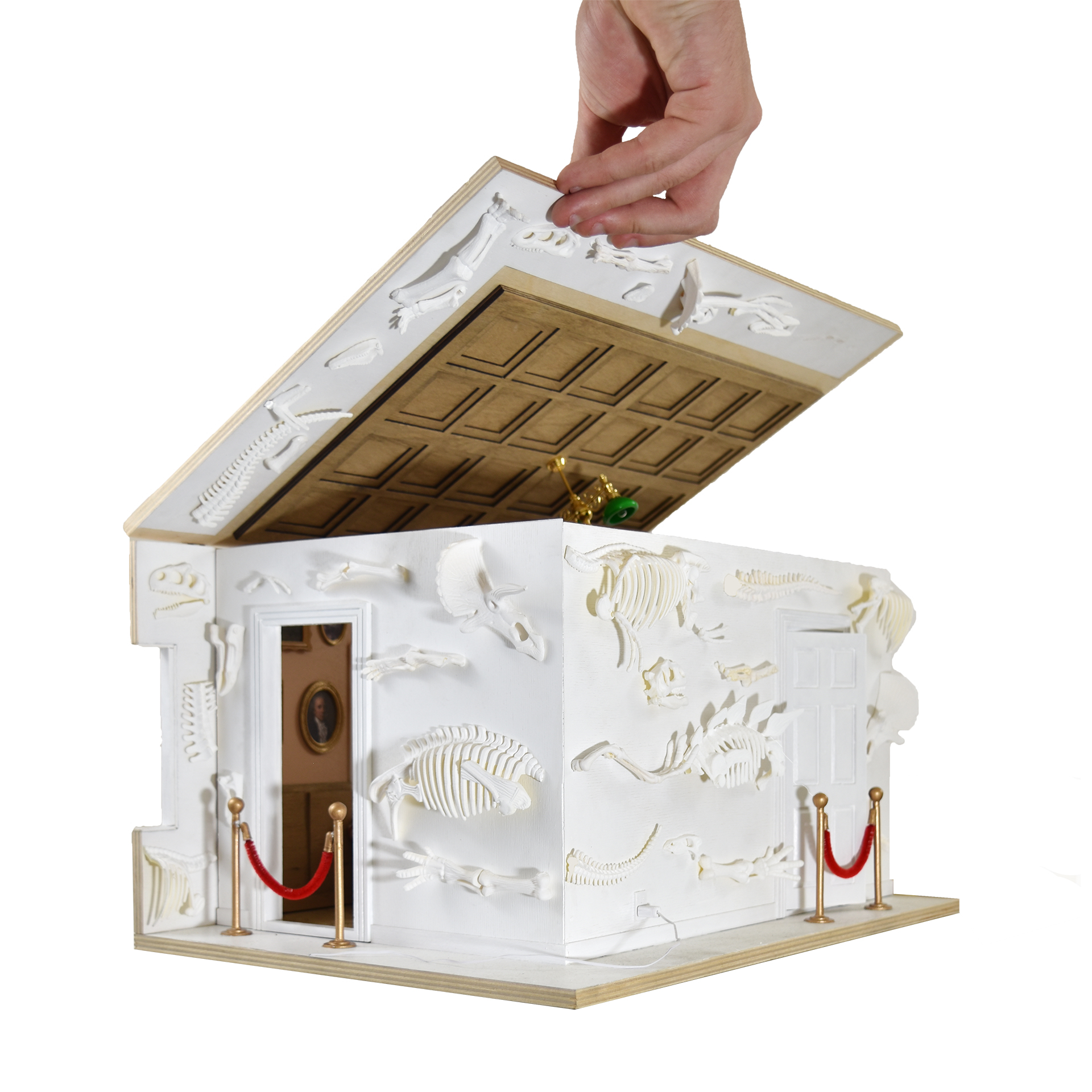
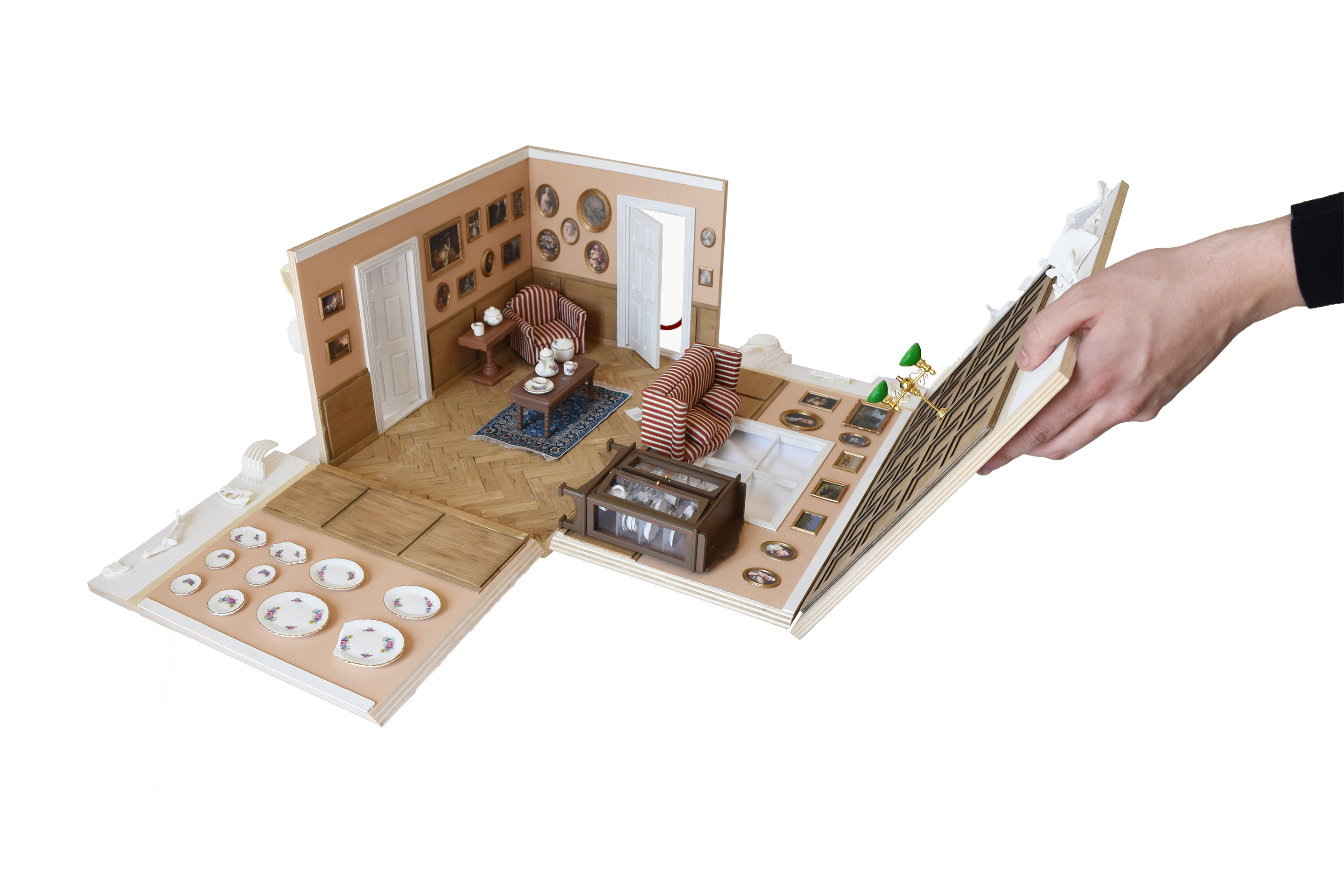
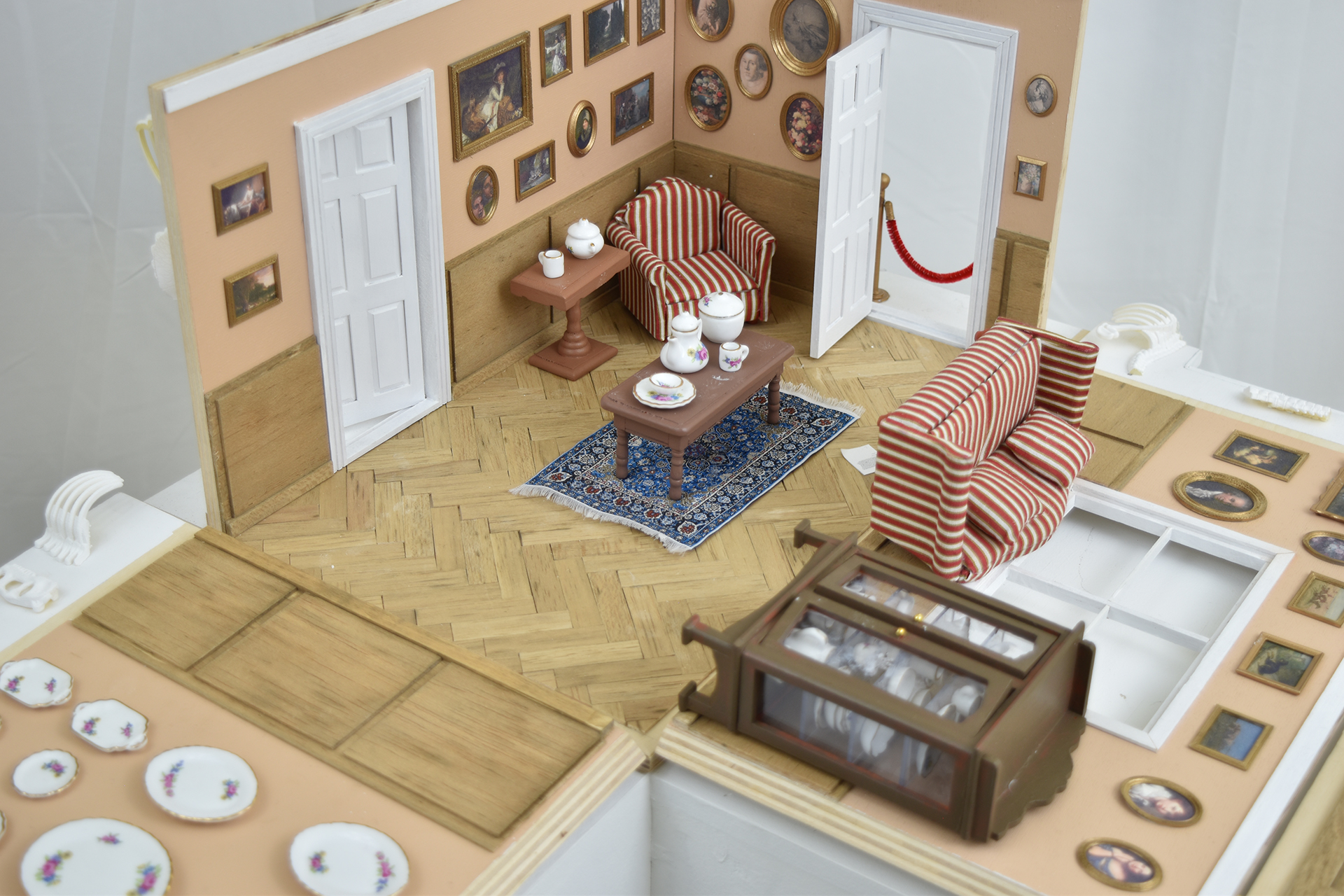
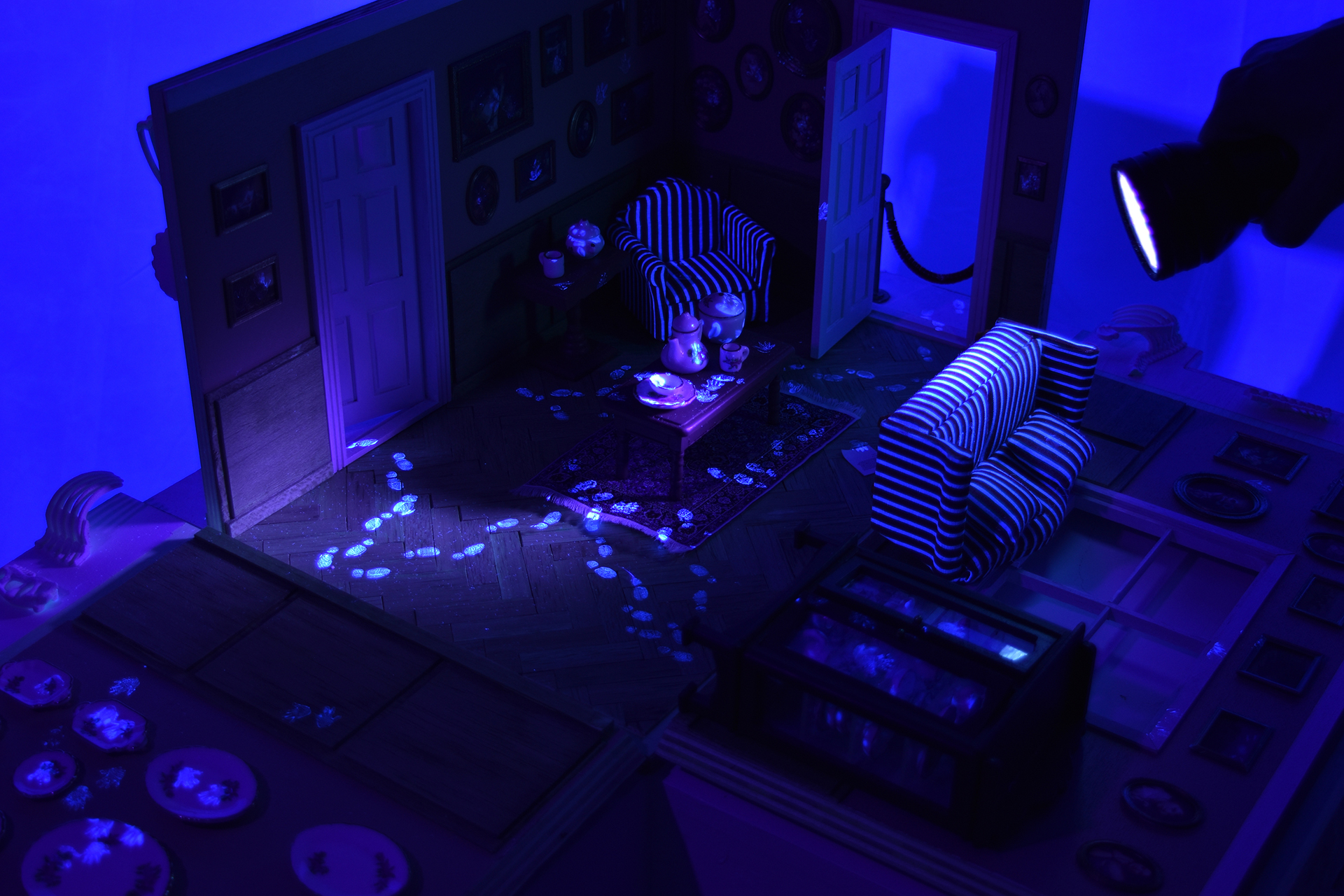
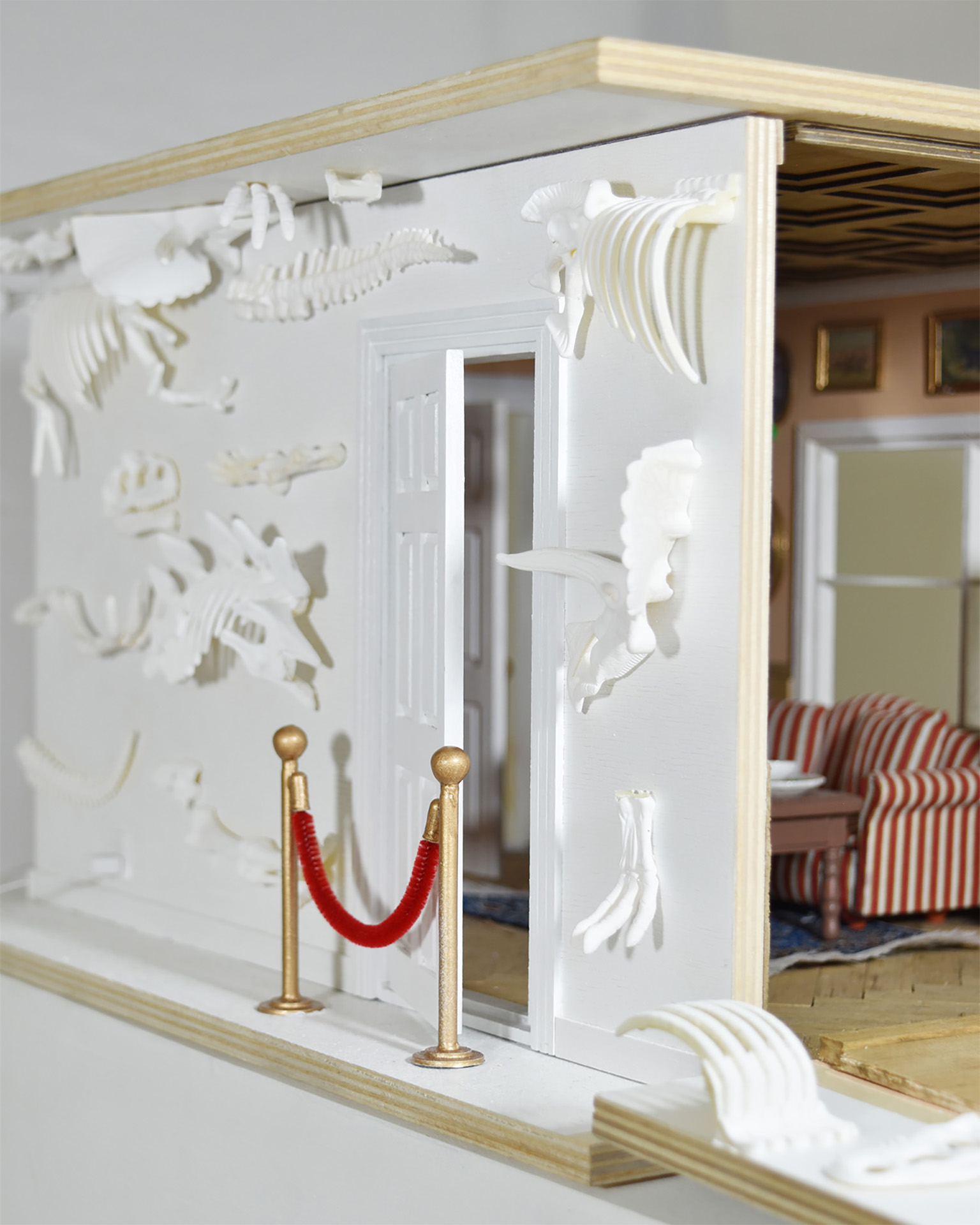
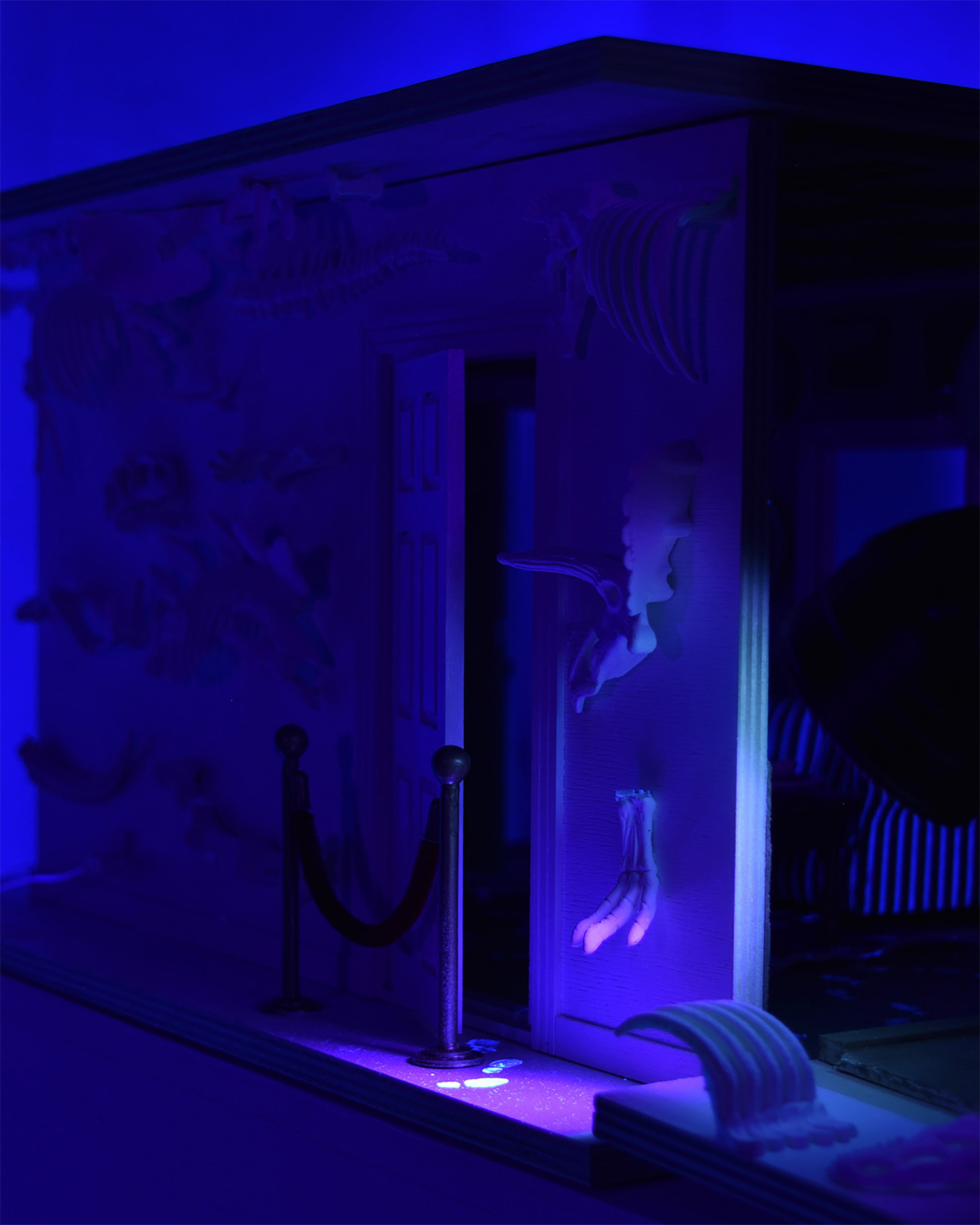
11. A Nutshell Study: The Dollhouse of Invisible Transgressions
This hinged miniature dollhouse model is a representation of one of Jane Doe’s most famous heists where she broke into a long closed off reproduction of a victorian tea-room inside a Natural History Museum and didn’t steal anything. Instead she simply used the objects for their intended purpose and had a solo tea party, leaving only left traces of her presence and a cleverly hidden written note describing her changing motivativations for pulling off heists. These traces are only revealed—both in the miniature and in the actual museum itself—through invisible ink that glows under blacklight.
model / plywood, acrylic paint, plastic, basswood, glass, ceramic, pipecleaner, wire
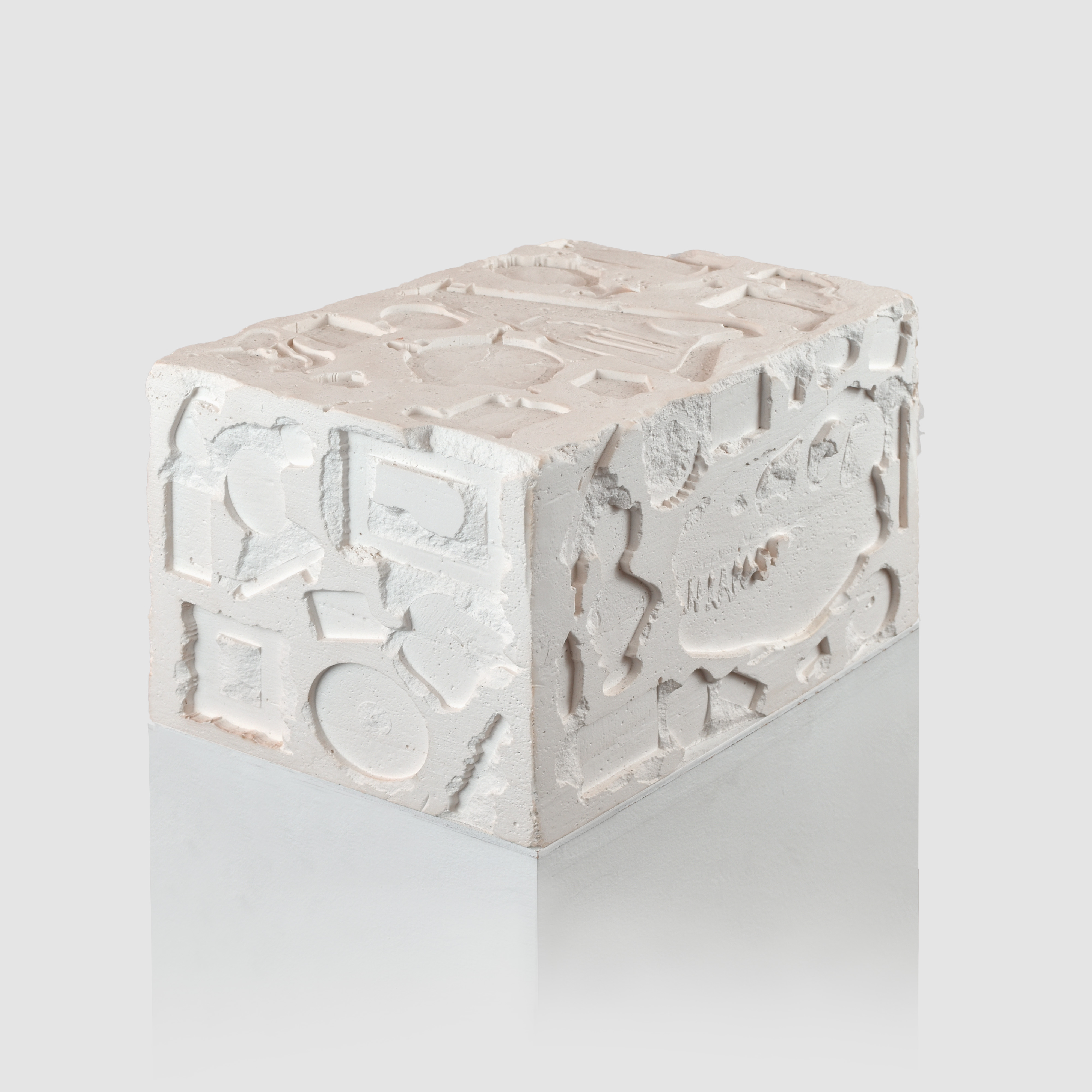
12. A Mobile Cabinet of Curiosities: A Miniature of the Cast of The Jane Doe’s Van Interior
This is a miniature cast of the interior of the van she held all of her stolen objects in—a space positive of her cabinet of curiosities on wheels reminiscent of the work of the artist Rachel Whiteread. The van was found with all of the objects she stole still inside, abandoned in a suburban parking lot,. This long awaited breakthrough in the case was seemingly allowed by Jane Doe herself. Since abandoning her van and its treasures her crimes have rarely ended in theft, and instead her motivation seems to be in the experience and planning of the heist itself. sculpture / casted plaster
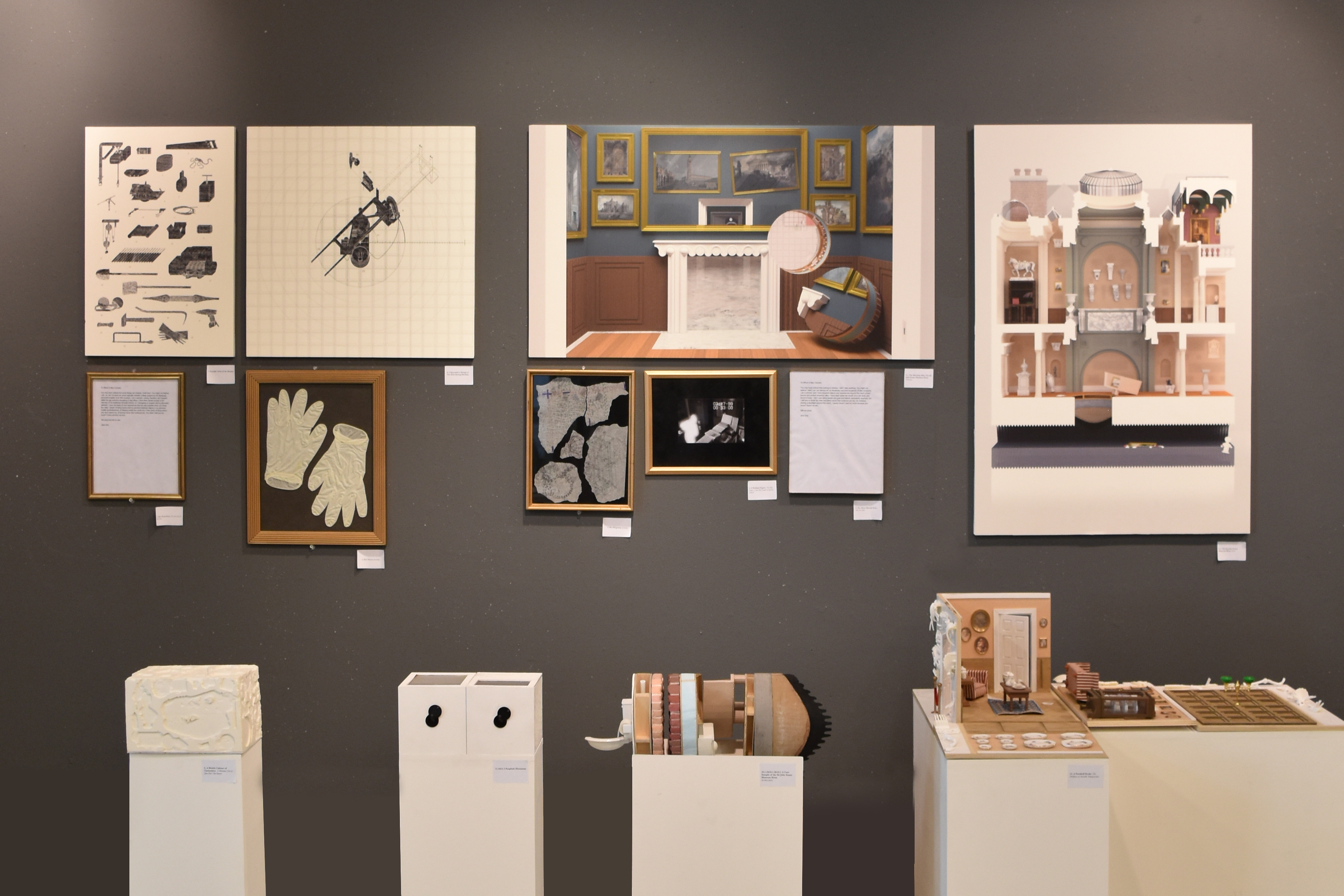
____
Special thanks to Sarah for her brilliant studio “Little Worlds” where we completed this work.
PUBLICATION:
KooZA/rch January 15. 2020
1st CED Student Exhibition. Wurster Gallery, Berkeley, CA. September 9. 2019